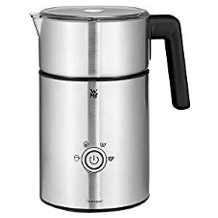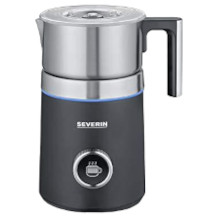Espresso machine purchasing advice: how to choose the right product
- What you need to know
- An espresso machine consists of three essential components: boiler, pump, and brew group.
- There are different espresso machines for different espresso demands, including single-circuit, dual-circuit, dual-boiler, and thermoblock machines.
- For the best espresso, the brewing temperature must be as constant as possible.
- At least nine bar of pressure are necessary to prepare an espresso.
- When “tamping”, exert a pressure of 33 to 44 pounds for a successful espresso.
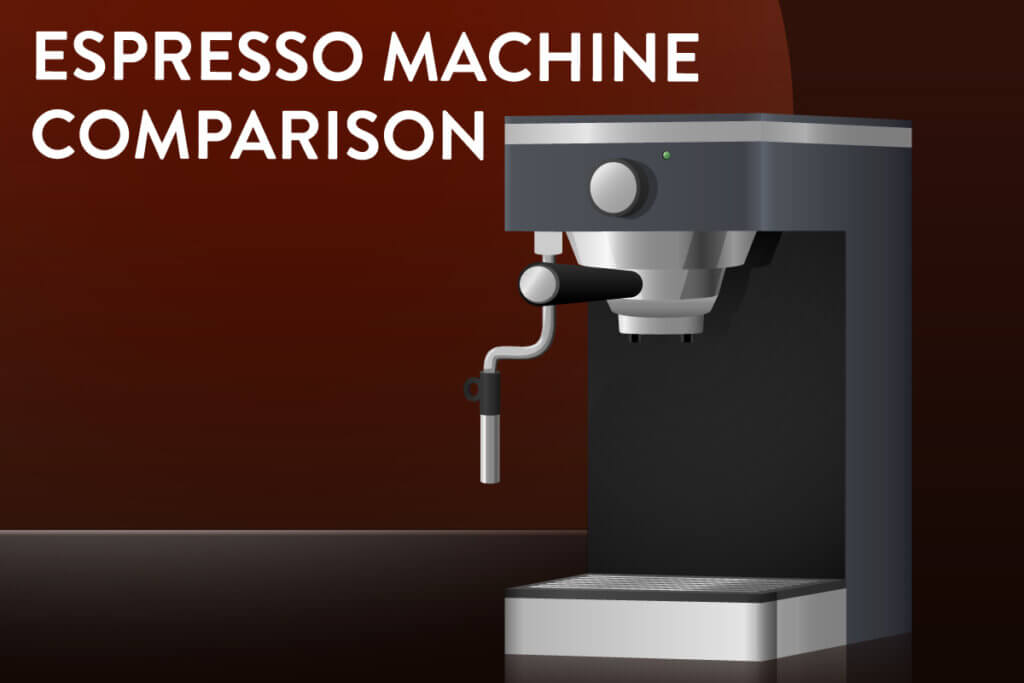
Small coffee, big pleasure
Anyone who enjoys espresso or other coffee specialities regularly would profit from the option of preparing them at home in the same way as in a café. It is, therefore, no surprise that espresso machines are increasingly found in private households, not merely cafés. Espresso is defined by its preparation: hot steam is forced through finely ground coffee powder at high pressure. This produces the typical crema — a fine layer of foam on the coffee —, as well as the high caffeine concentration.
What is an espresso machine?
An espresso machine is used to prepare not only espresso but also other coffee specialities. The term “portafilter machine” is used synonymously. As the name suggests, an important component is the brewing sieve into which ground coffee beans are filled. This distinguishes espresso or portafilter machines clearly from fully automatic coffee machines. Although the latter also prepare espresso at the touch of a button, they are not espresso machines in the classic sense.
How do Imake an espresso?
There are a few steps you need to follow to prepare an espresso: Before the machine can start the actual brewing process, the water must first be heated. This process is carried out by the boiler or a flow heater in the machine. It usually only takes a few seconds for the water to reach the target temperature of around 194 °F (90 °C). It is then pressed through the ground coffee beans under a pressure of nine bar or more. Depending on the espresso machine type, this pressure is built up either by a pump or a hand lever.
Fully automatic coffee machine or espresso machine?
When deciding what machine to purchase, most people will sooner or later find themselves having to decide between a fully automatic coffee machine and an espresso machine. One is an easy-to-use all-rounder, whereas the other is a more specialized device – the right choice is purely dependent on your needs. If you need a machine that prepares espresso but also other types of coffee like filtered coffee quickly and is easy to use, a fully automatic coffee machine is likely the better fit. If you want to make specialty coffee with a more professional feel to the entire process, an espresso machine is the way to go. Hence, coffee enthusiasts often opt for the ladder option.
Advantages and disadvantages of anespresso machine
If you are not put off by the slightly complex operation of an espresso machine, you will quickly learn to conjure numerous coffee specialities of café-quality. In addition, learning to operate the machine can develop into a real passion and turn you into a hobby barista yourself, as the machines have an undeniable charm to them which you cannot recreate by just pressing a button – with an espresso machine you enjoy not only the coffee but also the process. In addition, you benefit from various available settings: Among other things, the grind, brewing time, and brewing temperature can be individually adjusted. Finally, the crema made with a portafilter machine is second to none.
Advantages
- High coffee quality
- Great crema
- Various setting options
- Fewer bitter substances
Disadvantages
- Long heating time
- Somewhat complicated operation
What types of espresso machine are there?
Espresso machines can be divided into four different types according to their heating system: single-circuit, dual-circuit, dual-boiler, and thermoblock. Which model is the right one depends mainly on if you want to froth milk or not.
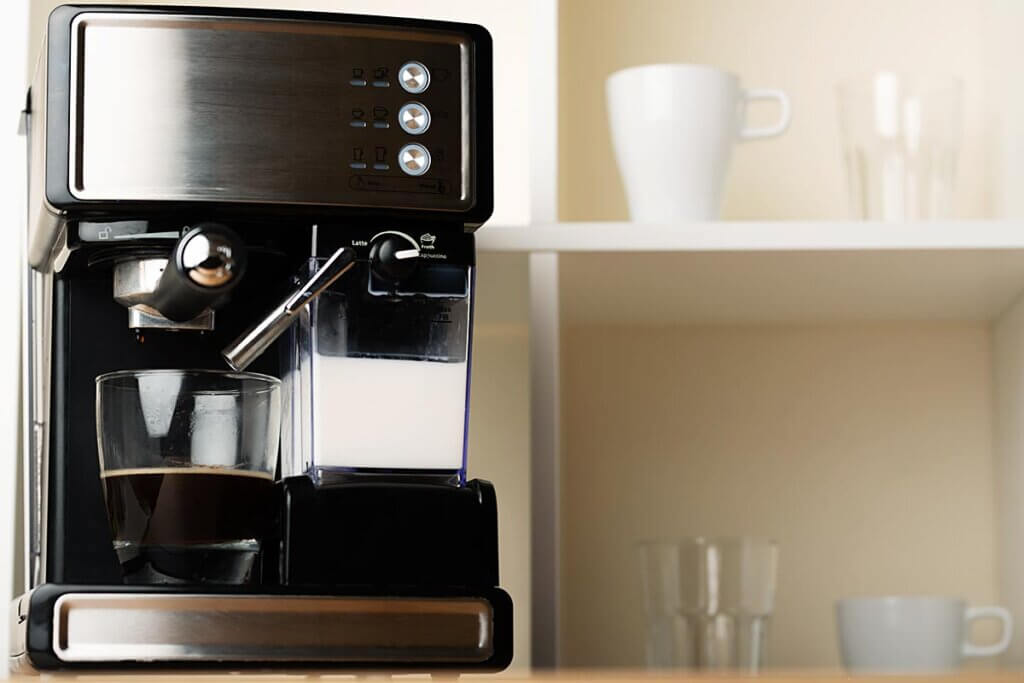
Integrated milk frother: yes or no?
Some espresso machines already include an integrated milk frother. However, these models are usually more expensive than espresso machines without one. In addition, a milk frother requires more frequent cleaning. Basically, espresso machines with a milk frother are worthwhile for anyone who enjoys coffee drinks like cappuccino or latte macchiato. That way, you can save yourself the trouble of buying a separate milk frother.
Advantages
- No additional milk frother necessary
- Space-saving
- Fast foaming
Disadvantages
- More expensive than models without a milk frother
- More frequent and thorough cleaning required
Thermoblock
Espresso machines with thermoblock are mostly found in private households. They have the advantage of a shorter waiting time when switching from brewing to steam. The waiting time results from the different temperatures. While a water temperature of about 194 to a maximum of 201 °F (90-94 °C) is required for the brewing process, a temperature of 230 to 266 °F (110-130 °C) is required to froth milk.
With the inexpensive single-circuit machines, both processes are implemented via one circuit. This means that it takes a while for the water to reach the desired temperature. By contrast, the thermoblock works like an instantaneous water heater. This significantly reduces waiting times and allows for a faster temperature change. In more expensive, larger espresso machines, several thermoblocks can be installed.
Single-circuit
In so-called single-circuit machines, the water for the espresso and the steam for the milk foam come from one boiler and use the same path. Hence, this heating system is compact and inexpensive. However, users have to put up with a longer preparation time because the espresso is brewed at a lower temperature than the milk is frothed. Those who prefer to drink their espresso without milk are well served by a single-circuit machine.
Dual-circuit
Unlike single-circuit machines, dual-circuit machines are based on two separate water circuits. This means that they are able to heat the water for the espresso and the steam for the milk frother separately. Dual-circuit machines are therefore a good choice for people who want to froth milk regularly but want to avoid long waiting times.
Dual-boiler
So-called dual-boilers go one step further than dual-circuit machines. They not only have two separate water circuits, but they are even equipped with two boilers: a small one for brewing water and a large one for the steam used to froth milk. Dual boilers enable a particularly constant brewing temperature, which is important for the taste of the espresso. However, they are significantly more expensive than single- and dual-circuit models.
What is a manual espresso machine?
Manual espresso machines are espresso machines with a lever that is operated manually. They work completely without electronics. The pressure with which the espresso is brewed must be generated by pure muscle power.
Components of an espresso machine
Espresso machines are made up of various components: the pump, the boiler, the brewing group,and sometimes a grinder. However, many portafilter machines do not have an integrated grinder. In this case, the beans must be ground separately by hand or with an electric grinder. The advantage of a grinder is the freshly ground coffee powder.
An integrated grinder is easy to use. The coffee beans are stored in the espresso machine’s designated container and freshly ground as needed. A distinction can be made between cone and disc grinders. There are also impact grinders and roller grinders; however, these are much less common.
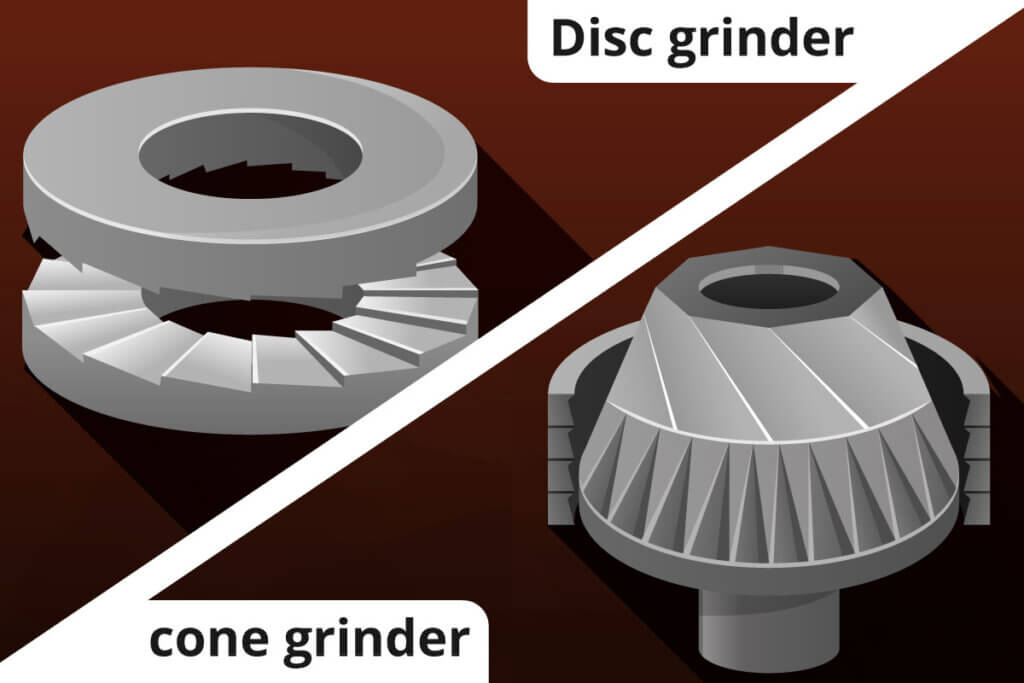
The cone grinder
In this grinder, a rotating metal cone presses against a metal ring. With the help of gravity, the coffee beans enter the grinder and are crushed by the cone. The speed of the cone is only about 400 revolutions per minute, which should prevent the beans from heating up during the grinding process – something you most definitely want to avoid, as it will make your coffee too bitter.
Due to the comparatively slow speed, the cone grinder is often considered the gentler option for grinding coffee beans. However, this advantage is quickly lost if the grinder is not of high quality, for instance, if a smaller metal cone and ring are combined with a weaker motor: In order to reliably achieve the desired grind of the beans, a higher rotation speed is necessary, which in turn will lead to overheated beans. Ultimately, one thing suffers: the aroma of the beans. Therefore, make sure to opt for a model with a high-quality cone grinder, to avoid overheating the beans.
The disc grinder
With the disc grinder, the coffee beans are ground by two concave discs. One is fixed, the other rotates. In modern espresso machines, both discs are made of ceramic and are therefore extremely durable. They work very evenly and are much cheaper than metal discs. Both versions are still available in stores. However, there is no difference in the grinding result.
The coffee beans enter the grinder primarily through centrifugal force, which operates at around 700 to even 1400 revolutions per minute, depending on the model. Here, the speed of the rotation is rather secondary. More important is the disc diameter, because the shorter the path of the coffee beans, the more heat will be generated. Professional machines usually have discs with a diameter of 5.0 to 8.5cm.
Choosing the right espresso machine
Due to the sheer variety of espresso machines on the market today, it is important to look at the most important criteria in advance in order to make an informed decision. The pump pressure has a significant influence on the quality of the espresso. Accordingly, a high-quality pump that generates high pressure is important. Other important considerations are the material and capacity of the boiler, the regulation of the brewing water temperature, the type of brew group, and the heating time.
The boiler material
The boiler is the heart of every espresso machine. It contains the water with which the machine brews the espresso. Among other things, the material of the boiler is paramount for the optimal brewing temperature. The following materials are the most common:
- Stainless steel
- Copper
- Brass
Copper is a tried and tested boiler material for espresso machines due to its heat-conducting properties. Brass being a copper-zinc alloy is much more robust and also cheaper. The most expensive of the three materials is stainless steel. However, it is also considered to be the most neutral in terms of taste. At the same time, stainless steel boilers are far less susceptible to limescale deposits and therefore require less maintenance. Regardless of the material, it is advisable to have the thickest possible outer boiler wall to be able to keep the boiler temperature constant for a long time.
The boiler capacity
After the boiler material, you also need to consider the boiler capacity of the espresso machine. The more espressos you want to prepare in quick succession, the larger the boiler capacity should be in order to avoid having to constantly refill and reheat. On the other hand, a smaller boiler leads to a shorter heating time. Machines with a larger boiler are also more expensive.
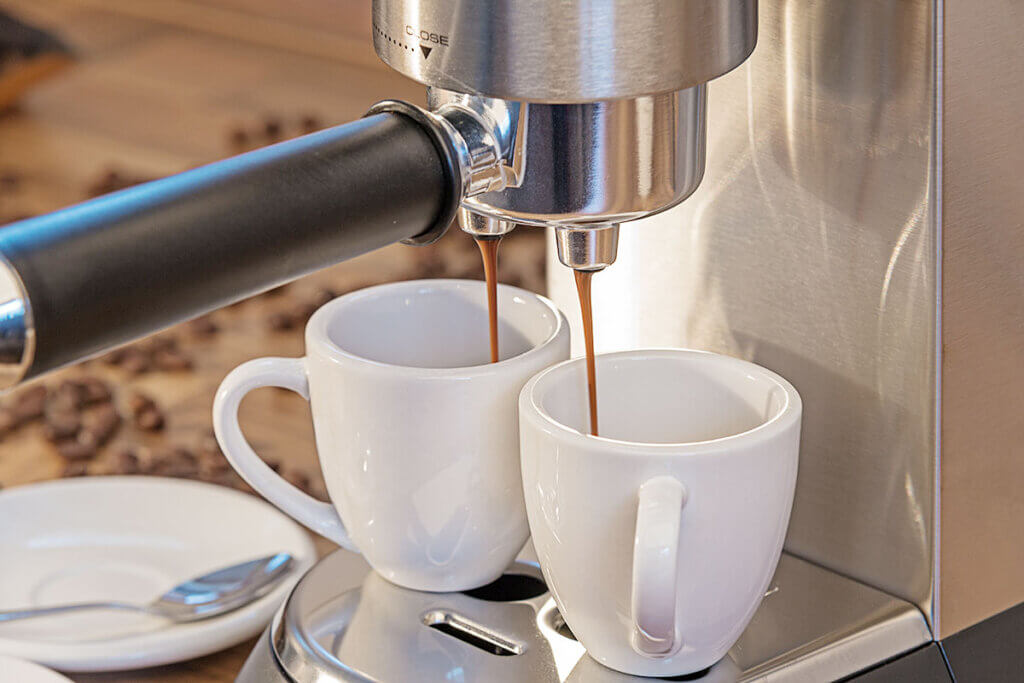
The PID controller
The abbreviation PID means “Proportional – Integral – Derivative”. The PID controller regulates the temperature of the brewing water and thus has a direct influence on the quality and aroma of the coffee. It regulates the deviation between the set and actual temperature at a given time. The aim is to keep the water temperature as constant as possible during the brewing process – an important prerequisite for a successful espresso. PID control is particularly useful for single-circuit machines, as they undergo a change in the temperature of the brewing water during the brewing process. The PID controller compensates for this. However, whether the feature is also necessary for dual-circuit machines is debatable.
The brew group
The brew group forms the connection between the boiler and the coffee powder. In single-circuit machines and dual-boilers, the brew group usually consists of a riser tube, a solenoid valve, and the brew shower. In dual-circuit machines, on the other hand, it consists of a brew head, a heat exchanger, and a valve. Several brew groups can also be connected to one boiler. Consumers can choose between an automatic and a manual version. The automatic version is very convenient, as the machine takes care of all the steps. Manual brew groups, on the other hand, have the advantage that consumers can adjust the hot water supply and brewing temperature individually.
The pump type
In most portafilters, a pump provides the necessary pressure. For a successful espresso, experts recommend a pump pressure of at least nine bar. Some machines can reach a pump pressure of up to 15 bar. While simple machines usually work with a vibration pump, higher-quality models rely on a rotary pump in combination with a fixed water connection. In the third way of generating pressure, the brewing water is forced through the coffee powder by means of a hand lever, either directly or with the help of a spring.
The vibration pump
The vibration pump was invented in the early 1970s and was the turning point that brought espresso machines into private households. To build up the required pressure, the vibration pump works with a counter pole. In the case of the portafilter machine, this is the pressed powder in the portafilter or the so-called blind sieve. Pressure has to be built up anew through the counter pole for each preparation. As a result, the machine hums continuously during operation and is significantly louder than machines with a rotary pump.
Vibration pumps are much cheaper to produce, a development which made espresso machines viable for private households. Despite their lower cost, they can move sufficient quantities of water to brew a good espresso.
Advantages at a glance
- Inexpensive
- Good performance
- Easy maintenance
The rotary pump
If the espresso machine does not have a vibration pump, it most likely has a rotary pump. These are the most common pump types in portafilter machines on the market today. The rotary pump can serve several brewing groups at the same time, but also keep the pressure constant throughout the brewing process.
In contrast to the vibration pump, this pump type does not need a counter pole. As a result, it is ready much faster and also operates much more quietly than the noisy vibration pump. Another plus point of this type is its durability. Rotary pumps are more robust and more powerful. However, they are significantly more expensive.
Advantages at a glance
- Powerful
- Quiet
- Robust and durable
- Constant pressure
Further purchase criteria
The aforementioned criteria already narrow down the selection of the right espresso machine for you needs significantly. For a more precise selection process, further criteria such as heating time, size and weight, volume, water tank capacity,and price can be considered.
The heating time of the machine determines how long you have to wait until your espresso machine is ready to brew. This takes longer for models with large boilers.
The appropriate size of the espresso machine depends on where it will be installed and the number of espressos required per brewing process. Models with a large boiler are, naturally, larger. Compact espresso machines, on the other hand, are ideal for single households. The weight of a portafilter can provide information on its quality, as high-quality stainless steel weighs more than plastic. Heavier models are also more stable.
The tank of portafilter machines usually holds between 33 and 50 ounces of water. For single households or infrequent use, smaller water tanks are also sufficient. For convenient cleaning and easy refilling, it is important that the water tank is removable.
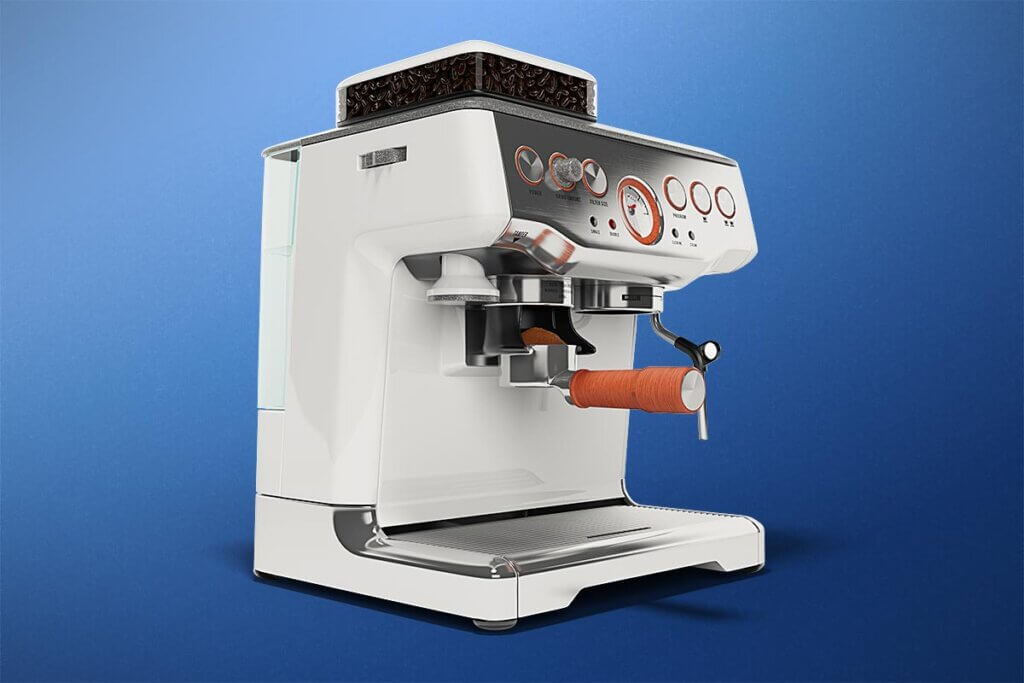
Practical accessories
When buying an espresso machine, there are a few practical accessories to consider. For example, a tamper with the right diameter, ideally made of stainless steel, makes sense. Another practical accessory is a tamper station, where the ground coffee can be pressed into the portafilter. Two milk jugs of different sizes are also recommended for preparing coffee specialities. One is used for preparing the milk foam and should have a capacity of about 500 ml. The second is used for pouring the espresso into the milk foam and is rather small with a capacity of 100 ml. Other useful accessories include:
- A cup warmer function to bring the espresso cup to the right temperature.
- A so-called knock-off box to remove coffee grounds from the filter.
- A blind sieve to be able to backwash the portafilter.
- A brush for cleaning the machine.
- Cleaning agent for cleaning the brew head, a decalcifier, and a grinder cleaner for the general care of the machine.
How do you make the perfect espresso?
Making the perfect espresso is an art in itself. The right equipment is just one item on the to-do list. Depending on the machine, practice and skill are required to prepare a great espresso. Follow the steps below for the perfect espresso:
Step 1: preheat the cup
Strong fluctuations in temperature can affect the espresso’s aroma. This applies not only to the brewing process but also to pouring. Therefore, the first step is to preheat the espresso cup. Some machines have a cup warmer for this purpose. Alternatively, it is sufficient to rinse the cup with a little hot water.
Step 2: clean thoroughly
Few factors influence the taste of the coffee as much as residue from the previous brewing process. It is therefore important to clean the machine thoroughly and remove any coffee grounds. Afterwards, you only need to wipe off oils, fats, and other residues, and you can start brewing anew.
The brewing head should also be cleaned carefully. Normally, it is sufficient to run hot water through the head. This will dissolve any residues and prevent the taste from being affected.
Step 3: grind coffee beans
Now the beans must be ground. For the best possible aroma and taste, it is advisable to grind them fresh for every separate brewing. It is also important to grind them as gently and evenly as possible without subjecting them to high temperatures, as bitter substances are released when the beans overheat. Beans that are ground too coarsely should not be used for a good espresso – a very find grind is ideal.
Step 4: the right dosage
How much coffee powder should go into the portafilter? Most portafilters can hold about seven grams of coffee powder. The powder should therefore only be poured into the carrier in a light heap. Then, you have to smooth it out and tamp it. This takes a little practice. The tamping pressure for an optimal result is 33 to 44 pounds.
Which coffee is the best for espresso?
Perfecting the brewing process down to the last detail is of no use if you do not use the right beans for your espresso. Contrary to popular belief, there is not one perfect bean variety or roast for making espresso. This mostly comes down to individual preference. Typically, darker roasts are associated with espresso making – often such beans are even labelled espresso beans. However, darker roasts tend to be stronger and bitterer. If you want a slightly more neutral taste and want to taste more of the original flavor notes of the bean, you should opt for a lighter roast. A medium roast is a safe bet for beginners and anyone who doesn’t want to get too deep into the weeds of bean varieties and roasts.

Cleaning and maintenance
Nobody wants the remains of old coffee in a fresh cup. Therefore, it is important to clean the espresso machine regularly and thoroughly. Daily maintenance usually only takes a few minutes. A more thorough cleaning should take place at least every six months.
The daily care routine
The daily maintenance routine of an espresso machine consists of four steps:
Cleaning the steam lance
Anyone who likes to drink coffee specialties with milk like cappuccino or latte macchiato uses a steam lance every day, as it is used to froth the milk. Since the lance is held directly in the milk container, it is very important to clean it directly and thoroughly after each use. Milk residues are best removed when still fresh. Once they have dried, it is much more difficult to remove them reliably. This is particularly important because old milk residues are an ideal breeding ground for germs.
Flushing
When preparing several espressos in one go, this step is often omitted. However, it is beneficial for the taste of your espresso to rinse the sievethoroughly every now and then. This removes coffee residues and oils.
Before each new espresso, it is also recommended to flush the machine. This involves removing the portafilter from the brew group and then rinsing it briefly with hot water. Old espresso residues are thus reliably removed, and the taste is no longer affected.
Brushing
Once you have made the last espresso for the day, it is time for the brushing. Simply remove the last espresso residue from the brew group with a brush.
Cleaning the drip tray
The last step almost takes care of itself: Remove the drip tray, empty it, and clean it out. Water and coffee residues that have accumulated for days can cause the machine to rust. In addition, they look more and more unappetising with each passing day, so it is better to clean them regularly.
Image 1: © FinalCheck | Image 2: © Anton / stock.adobe.com | Image 3: © FinalCheck | Image 4: © nemo1963 / stock.adobe.com | Image 5: © Oleh / stock.adobe.com | Image 6: © tiero / stock.adobe.com

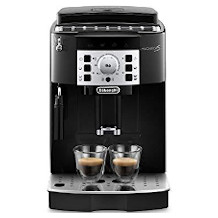
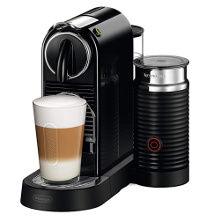
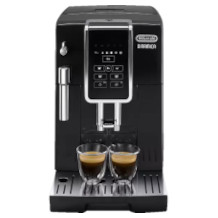
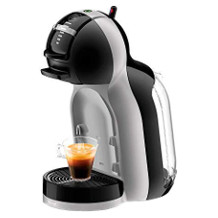
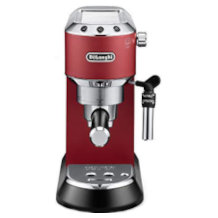
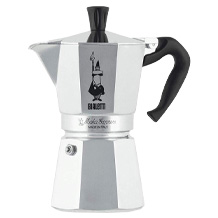
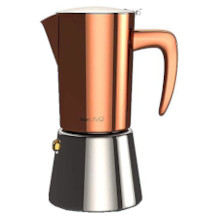
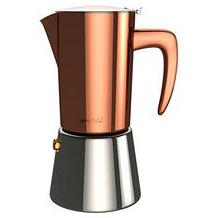
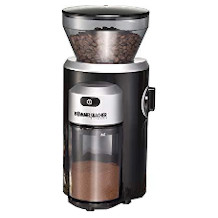
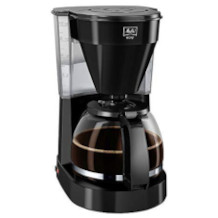
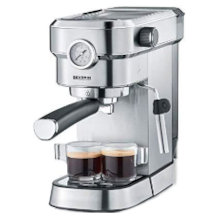
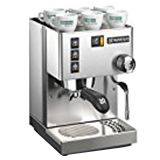
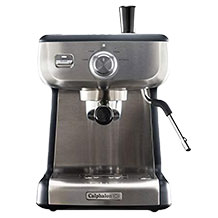
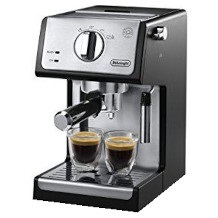
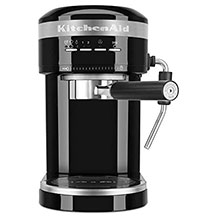

 851 reviews
851 reviews
